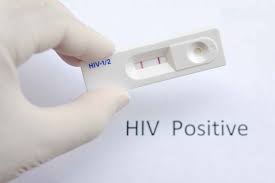HIV among young people remains a significant public health concern because the decline in new HIV infections among adolescents and youth has not been rapid enough to effectively control the epidemic.
Globally, young people, 15-24 years, account for 28 per cent of new HIV infections in 2023 while in the Caribbean, they accounted for 27% of the 15, 000 new infections, up from 15% in 2020. This rising proportion of total HIV incidence among young people which ranges from 14% in Suriname and Guyana to 37% in Barbados, is concerning and warrants further investigation and serious attention, if we are to end AIDS as a public health threat by 2030.
The situation faced by children and adolescents is equally concerning. At the end of 2023, 2.38 million children and adolescents, aged 0-19 years, were living with HIV globally. Of the 630,000 people who died from AIDS-related illnesses, 90,000 (14%) were children and youth under 20 years. While new HIV infections among children aged 0-14 years and adolescents aged 15-19 years declined since 2000, progress has stalled in recent years. With early diagnosis and treatment, early childhood survival rates for children living with HIV have improved, but adolescents, particularly those aged 15-24, are being left behind. Last year, 71% of new HIV infections among adolescents aged 10-19 years were among girls. In East Asia, the Pacific, Latin America, and the Caribbean, two-thirds of new adolescent infections (ages 10-19) occur among boys. Additionally, 25% of all pregnant women living with HIV globally are between 15 and 24 years.
Structural barriers in the current response
Several factors are driving the epidemic among adolescents and youth. HIV prevention and testing among adolescents and young people have been particularly challenging due to factors such as social norms, vulnerability, high-risk sexual behaviors, policy barriers, limited access to healthcare services, and poor care-seeking behaviors. The lack of comprehensive knowledge about HIV transmission, prevention, and treatment increases risky sexual behavior, fueled by myths and misconceptions about the virus. Many schools lack comprehensive sexuality education, and there are few youth-friendly facilities within or outside health care settings to engage and educate young people about HIV.
Social stigma surrounding HIV continues to deter young people from seeking testing, counseling, or treatment services. Fear of rejection by peers and family members forces many young people to hide their HIV status, further preventing them from accessing necessary healthcare. Girls and young women are especially vulnerable to HIV due to gender inequality, lack of power in sexual relationships, early sexual debut, and gender-based violence. Marginalized young key populations, such as those involved in sex work, also face elevated risks.
The mental health of young people living with HIV must not be overlooked. Many experience feelings of isolation, anxiety about their future, and concerns about living a fulfilling life. Unfortunately, mental health services tailored to the needs of HIV-positive youth are often limited. However, advances in medical technology and digital platforms present new opportunities for engaging young people in HIV prevention and treatment. Social media, telemedicine, and mobile health apps have been instrumental in disseminating information and connecting young people with essential services Access to these services is essential to fostering the health, well-being, and dignity for all hence removal of these barriers and ensuring the services are youth-friendly should be prioritized. In fact, this must warrant deliberate health policy and strategy to reach young people wherever they are with high quality, confidential and non-discriminatory HIV, and sexual reproductive health services.
Tailored Strategies for Addressing HIV Among Young People
Policy makers need to think differently about how to address the needs of young people in ways that are transformative, and impactful to achieve HIV epidemic control by 2030 and beyond. Governments must removal all policy and legal bottlenecks, and, most importantly, increase domestic health investments to deliver youth friendly services to meet the needs of young people. The follow evidence-informed approaches are worth considering:
1. Keeping Young People in School: Governments should address the challenges in education, for both boys and girls, given the impact it can have on reducing their risk of acquiring HIV and other sexually transmitted infections, delaying sexual debut, and reducing early pregnancy. In school education campaigns should focus on increasing knowledge of HIV prevention methods and dispelling misconceptions. Governments should integrate rights-based Comprehensive Sexuality Education (CSE) or Family Life Health Education into all schools, tailored to the cultural context of the Caribbean. These programs should empower young people with knowledge about HIV, sexual health, consent, and prevention tools such as condoms and PrEP.
2. Youth-Friendly Integrated Healthcare Services: Public Health systems must create a safe, non-judgmental environment for young people, especially in rural areas, to ensure they can access confidential, non-discriminatory HIV, sexual health, and mental health services in all primary healthcare settings. Health care workers need to be trained in how to engage and deliver services to adolescents and young people.
3. Targeted Prevention Strategies and Access to Treatment: HIV Programs should prioritize vulnerable young people, young key populations, and other vulnerable groups using differentiated service delivery models that meet their needs. Involve young people in addressing legal and policy barriers they face, such as age restrictions for accessing HIV services to create the enabling environment necessary to reduce stigma and improve access to essential HIV and sexual reproductive health services. It will be important to design services to respond to the needs of young people in terms of accessing HIV testing, linkage to care and treatment, retention in care and adherence support to ensure sustained viral suppression which is usually very challenging for children and young people. Offering psychosocial counseling for HIV status disclosure, treatment literacy, sex education and transitioning from adolescent to young adulthood for children living with HIV would be necessary and must be prioritized.
4. Youth Empowerment and Engagement: Young people must be empowered as leaders in the HIV response. Involving them in designing and implementing HIV programs ensures their needs are met. Building the capacities of young people through youth advisory boards/groups and peer-led initiatives can help make interventions more relevant and effective in responding to their needs. With HIV and health seen as a development issue, it is important to amplify the unified political voices of young people through institutional capacity building of youth entities such as the Caribbean Regional Youth Council to champion issues related to social transformation and good governance within CARICOM and beyond.
5. Leverage Technology: Mobile apps, social media, and other digital platforms should be widely used to share accurate information to educate and engage young people in HIV prevention, testing, and treatment. Governments and youth focused civil society organizations should collaborate on policies and programs to develop digital tools that mobilize and improve access to youth-friendly services. Policymakers should find opportunities to leverage the power of artificial intelligence to educate and develop entrepreneurial skills of young people as a means of empowerment and to develop their human potential for long term sustainable development of the Caribbean region.
6. Evidence-Based Approach: Countries must invest in robust data systems to track the epidemic among young people and how HIV impacts their demography and population structure. Disaggregating data (by age, gender, and key populations) is critical for shaping health and social policies as well as deigning tailored programs which are regularly monitored for progress and identifying gaps in service delivery and putting in place corrective measures which are youth focused.
Young people play a crucial role in driving the positive changes needed to end AIDS as a public health threat globally. However, without greater attention to HIV among adolescents and youth, the world will not achieve its goal of ending the epidemic. By addressing these challenges and implementing comprehensive, evidence-based strategies, policymakers, civil society, and technical partners can significantly reduce HIV infections among young people, improve access to medicines to make meaningful progress toward ending AIDS as a public health threat in the Caribbean by 2030.
Dr Richard Amenyah is a medical doctor and public health specialist. He is the director for the UNAIDS multi-country office for the Caribbean. Follow him on X (formerly Twitter) at @RichardAmenyah or @UNAIDSCaribbean. Send feedback to jamaica@unaids.org.




